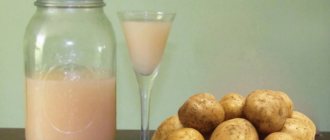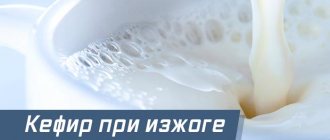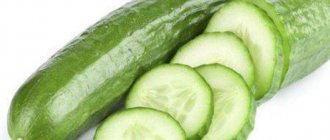Newborns and infants
Newborns suffer from constipation due to imperfections in the digestive system.
Their gastrointestinal tract is not yet populated with beneficial bacteria that help digest food. This problem may accompany the baby until the introduction of the first complementary foods.
In the first months of a baby’s life, a rinsing agent is administered only if absolutely necessary, if there is no stool for more than 3 days. If the problem remains, the enema is repeated only after consultation with the attending physician.
The functioning of the gastrointestinal tract of a newborn should be adjusted with special exercises or medical microenemas designed for infants.
You can’t go anywhere without water: the simplest treatment option
To use an enema for constipation, it is not at all necessary to come up with an unusual medicinal solution. For uncomplicated constipation, regular rinsing with water is sufficient. So, for example, if you give a large enema (over 500 ml) with warm water (22–23 degrees), it will stimulate the lower intestines. If constipation is formed in this part, then intensive excretion of dissolved feces will occur.
To reflexively stimulate peristalsis in the middle sections of the intestine, medium enemas with cold water are done. You need to be careful with this method of treatment at home, since this procedure is contraindicated for spastic constipation (caused by spasms). They are also prohibited from doing during inflammatory processes.
If a person suffers from dyskinetic (neurogenic) constipation, then microenemas can be done with water heated to 35–36 degrees. Procedures with large volumes of water at this temperature cannot be carried out, as this can cause excessive dilation of intestinal vessels.
Frequency of enemas
In special cases, for example, pregnant, elderly or bedridden patients, cleaning is advisable under the supervision of a physician and as prescribed. The frequency and frequency are determined by the attending physician.
During pregnancy
During pregnancy, problems with bowel movements become especially important. The enlarged uterus puts pressure on the pelvic organs, which leads to prolonged constipation, intoxication of the body and the threat of pregnancy failure. However, using an enema in the first trimester is strictly prohibited.
Stimulation of peristalsis at the beginning of pregnancy provokes the following disorders:
- colitis;
- uterine tone;
- low placentation;
- threat of miscarriage.
After 36 weeks, an enema can be given after consultation with a doctor. If there are no contraindications, cleansing is carried out once a week.
Elderly people and bedridden patients
In this group of patients, atony of the intestinal wall occurs, which leads to chronic problems with stool. In this case, a special diet, drinking plenty of fluids and taking laxatives are prescribed.
Sometimes such measures are ineffective. In this case, an enema is prescribed for constipation.
As prescribed by the doctor, manipulation is performed once a week, if there are no other gastrointestinal diseases . If the expected benefit from cleansing exceeds the harm, then the enema is used once every 3 days.
Indications for performing an enema
Many patients do an enema at home without first visiting a doctor. If a one-time treatment for constipation will help normalize the situation, then daily use of the method will bring nothing but harm. If you need to help your intestines every day to get rid of fecal accumulations, it is important to consult a specialist. The situation cannot be resolved by using forced cleansing every day. It is necessary to understand that enema is considered an auxiliary therapeutic method and can be used for the following conditions:
- chronic constipation;
- "sluggish" bowel syndrome;
- difficulties with evacuation of feces as a result of taking medications;
- cleansing during therapeutic fasting.
Read
About Polysorb and Activated Carbon: their advantages and disadvantages
Using an enema at home
Clyster is used in the following cases:
- bloating;
- difficult stool;
- Irregular bowel movements (change from constipation to diarrhea).
Before cleansing at home, you need to switch to a plant-based diet and drink as much water as possible for a few days.
Contraindications:
- increased body temperature;
- nausea;
- chronic gastrointestinal diseases;
- diabetes.
It is useful to cleanse early in the morning before 7 o'clock. It is necessary to administer the enema lying on your side, pressing your knees towards you. Esmarch's mug is filled with warm boiled water and suspended to a height of 1.5 meters.
The tip is lubricated with Vaseline and inserted into the anus, but it is necessary to open the tap on the container. This is how fluid is introduced into the intestines.
Not so simple
Basic rules for combating defecation disorders at home:
- An enema for constipation is not a medicine that can completely cure the intestines. This remedy helps to empty the colon well and quickly. But this procedure can only have an indirect effect on the cause of the disease. This is why it is so important to make a correct diagnosis and find out why bowel movements have occurred (it is better to get tested in a hospital and consult a doctor).
- Any laxatives can be addictive. If you use this remedy frequently (more than 10 days in a row), then the problems will begin to return immediately after the drugs wear off. The body adapts and stops reacting.
- There are different types of laxatives and not all help. If cleaning done at home does not work, then you can try another way to restore bowel function. Among the main measures, experts recommend laxative suppositories.
The cleansing procedure is not done if the person is suffering from severe abdominal pain and there is bloody or purulent discharge from the rectum. These symptoms may indicate serious illnesses in which the use of laxative enemas is strictly prohibited.
Preventive cleansing procedure
In order not to cause harm to the body for preventive purposes, an enema can be given up to twice a month. In this case, instead of boiled water, chamomile decoction is used. Such a washing agent will have an analgesic and antiseptic effect, and relieve excessive gas formation.
Pharmaceutical chamomile (2 tbsp) is brewed with 250 ml of boiling water and left for 15 minutes. Then filter and mix with boiled water.
Preventive cleansing operations will rid the body of toxins and improve the performance of all its systems.
Recipes based on natural oils
For an enhanced effect, you can make special solutions at home that are designed to quickly relieve constipation. An oil enema is prepared based on the following components:
- Castor oil base: 20 ml castor oil per 800 ml warm water. Do 150–200 ml at a time.
- Olive oil base: 80 ml olive oil per 500 ml warm water. Use 150–200 ml at a time.
- Flaxseed oil base: 150 ml of warm linseed oil per 500 ml of cool water. Do 150–200 ml at a time.
- Combined oil base: 30 ml of petroleum jelly, 30 ml of glycerin, 30 ml of enema soap, 60 ml of olive oil - dissolve everything in 400 ml of warm water. Do enemas with this solution several times during the day.
Natural oils have a healing effect, relieve inflammation and promote restoration of the mucous membrane. Such remedies help relieve constipation without harm to the body.
Oils added to the enema solution will help relieve constipation.
Before carrying out the cleaning procedure, it is recommended to prepare a fresh solution. It is better not to use more components than recommended in the recipe. This may cause irritation or an allergic reaction.
Cleansing enema
Washing agents can be used for the purpose of losing weight during a diet or for constipation, which are interconnected.
A sharp decrease in the amount of food consumed can lead to problems with bowel movements, in which case the body needs help. In any case, doctors do not recommend cleaning more than twice a month.
For weight loss
Clyster is a popular method of cleansing the body when losing weight. When using it, you must remember that frequent enemas without consulting a doctor lead to obesity, and weight loss will not occur.
The large intestine will get used to constant stimulation and without it it will become problematic to have a bowel movement.
Cleansing liquid is administered in a volume of at least 500 ml. For this purpose, an Esmarch mug is used, not a pear. During the period of weight loss, you can do up to 5 cleansing procedures every other day for a month.
The next course can be repeated after 3 months.
For constipation
A cleansing enema after prolonged constipation can reduce the intoxication of the body with decay products. A person gets rid of the feeling of heaviness, discomfort, and spasms. For emptying, the procedure can be carried out no more than 2 times a month.
Frequent manipulations lead to disruption of the functioning of the digestive organs, difficulty in absorbing water and nutrients.
Choosing the right product
In order to properly perform an enema for constipation, you need to choose the remedy wisely. According to the principle of action, the components are cleansing, siphonic, subaqueous and hypertonic. They have different effects and are used in certain situations.
You can cleanse using an enema solution for constipation in the following quantities: 500 ml (maxi), 100–500 ml (medium) or less than 100 ml (micro). The volume is selected depending on the product used - more concentrated solutions can only be used in a minimum dosage. As a rule, large volumes act quickly, as they have an intense irritant effect on the rectum and lower intestines.
Types of cleansing procedures:
- Siphon. A complex procedure that is rarely performed independently. It is based on intensive intestinal lavage: first, liquid is administered from a large container raised high above the person. Under the force of gravity, water quickly enters the intestines, after which the vessel is lowered and the liquid comes out. The procedure is repeated several times without interruption. In this way, the most severe dysfunctions are removed, including those associated with intestinal obstruction.
- Hypertensive enemas work due to the fact that water with salt after administration is retained in the intestines for some time. It has an irritating effect, the accumulated feces dissolve and come out more easily. Special hypertonic liquids with salt are used as a basis. Such enemas can be performed at home, but with extreme caution.
Harm and complications from frequent use of enemas
The apparent simplicity and usefulness of this manipulation is fraught with many dangers. Doctors are generally against the uncontrolled use of this method of emptying.
Due to constant washing, the following complications may develop:
- Lazy gut syndrome. Without outside influence, the rectum simply ceases to perform its functions of “evacuating” feces to the outside. This leads to chronic, painful constipation. As a result, a person will be able to have a bowel movement only with the help of an enema.
- Dysbacteriosis. The liquid entering the rectum washes away all bacteria, including beneficial ones, and the intestinal microflora is disrupted. In this case, chronic diarrhea, metabolic disorders, and deficiency of vitamins and microelements may develop.
- Intoxication of the body. Harmful substances from stagnant feces under the influence of liquid can be absorbed into the walls of the colon.
Any medical procedure must be approached responsibly. Abuse of this kind of manipulation can cause irreparable harm to the body .
How to properly cleanse the body
The enema can be given at home or in a hospital. The medicinal composition is supplied to the rectum using specially designed devices. The composition of the mixture can be very different, it depends on the problem. If it is necessary to remove unsafe substances or eliminate symptoms of acute intoxication, a cleaning solution is used. Often an enema is given before the onset of labor and to conduct various diagnostic studies.
To prevent the healing liquid from being absorbed by the intestinal walls, the solution temperature is room temperature. In this case, the composition will be able to have a therapeutic effect and will be eliminated naturally. If necessary, eliminate the symptoms of constipation and soften stool, this option is used most often. Despite the high effectiveness of the procedure, it is not possible for everyone and not as often as desired. How often can an enema be done is the main question for patients.
Read
About tea for colon cleansing
Recipes based on natural ingredients
The following foods and plants will help cleanse the intestines:
- Beets: pour 20 grams of beets with 2 glasses of water, boil for 30 minutes. Cool the broth to 25 degrees and do the procedure with a medium pear.
- Natural honey: take 10 grams of liquid honey or propolis and dilute in 100 ml of warm water. Do not use if you are allergic to bee waste products.
- Strawberries: a handful of strawberry leaves per 200 ml of boiling water. Let it brew for half an hour. Then strain and heat to 30 degrees. In addition to eliminating constipation, this procedure will strengthen the blood vessels of the intestinal walls, help in the treatment of hemorrhoids and reduce inflammation.
- Medicinal herbs: take 1 tsp. celandine, calendula and chamomile. Pour 500 ml of boiling water and leave for 20–30 minutes. Fill with water to the required volume.
After an enema, which contains natural substances, it is recommended to monitor your condition. If there is no burning or itching, the procedure can be repeated as needed.
A cleansing enema for constipation often helps to quickly normalize bowel movements at home, but is not the only way to eliminate constipation. It is important to do all the tests and find out the cause of intestinal problems and eliminate it, otherwise difficulties with bowel movements will return regularly.
Constipation is a common phenomenon that can have a negative impact on human health. Using an enema is the most effective way to relieve constipation at home if laxatives do not provide relief.
An enema is an event in which liquid is introduced into the intestine for the purpose of cleansing. Medical manipulation is unpleasant, but sometimes it is the only way to cope with the phenomenon if other means do not help.
The procedure is simple, but has rules that must be followed to achieve the desired result without consequences for the body. Depending on the purpose and volume of the solution, the following types are distinguished:
Oily
As the name suggests, cleansing needs to be done using various oils. For constipation, you can use olive, sunflower, and Vaseline oil. Once inside, the oil softens the intestinal walls and carefully removes mass from the body.
Before using an enema with vegetable oil, the product must be heated to a temperature of 37-38 degrees. After 10-12 hours, with proper use, the desired effect is achieved.
Hypertensive
If the oil remedy does not help cope with the symptom, you can do a hypertensive enema. The effect occurs within half an hour. Saline enema solution. A salt enema is prepared from regular salt or a pharmacy equivalent.
Salt stimulates peristalsis, and the liquid flushes out stagnant feces.
Cleansing
This is the most effective way to cleanse the intestines in adult patients.
It is necessary to introduce a large volume of water to wash away the feces. The manipulation is carried out using an Esmarch mug filled with cold water. After 5 minutes, the desired effect will be achieved.
Contraindications
The use of an enema is an emergency measure in the fight against constipation. But this method also has contraindications. The procedure is prohibited for patients with symptoms and diseases:
- Malignant tumor of the rectum. To avoid injury to tumors, it is better to use drug therapy to treat constipation.
- Inflammation of the parietal and visceral layers of the peritoneum.
- Diseases of the cardiovascular system.
- Mental illnesses.
- Haemorrhoids. For bleeding hemorrhoids, this method of combating constipation is contraindicated. Since the tip can cause serious injury to the affected mucous membrane.
- A pathological condition of the rectum in which it is located outside the anus.
- Pathologies of the rectum.
- Weakness, malaise, elevated body temperature.
- Postoperative period.
If the patient has regular stool retention, using the method to cleanse the intestines is not recommended. A case such as chronic constipation requires diagnosis and treatment of the cause of the symptom.
When the tip is inserted, the person feels severe pain - the procedure stops. If pain is present when filling the intestines with a solution, you should also abandon this method of combating constipation. You need to consult a doctor to prescribe medication that can safely eliminate the phenomenon.











